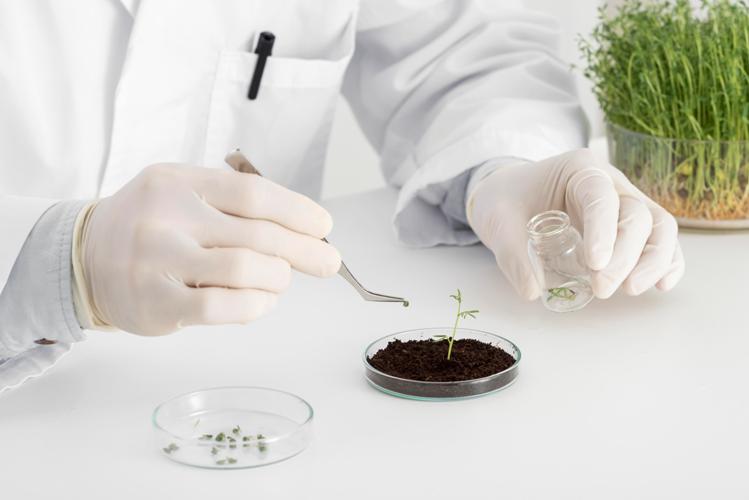Soil carbon sequestration is a process of transferring CO2 from the atmosphere to the soil in the form of organic carbon. The process starts with photosynthesis, where plants convert atmospheric carbon dioxide into organic compounds. The compounds are passed into the soil through root exudates and plant residues. Soil Organic Carbon (SOC) is the carbon fraction of soil organic matter that is derived not from plants but also from animals and microorganisms. Another crucial source of the compounds is the byproducts of animal and microbial activity.
How to Measure the Carbon Sequestration in Soil?
Measuring soil carbon sequestration is a crucial step for agribusinesses and farmers who want to make the most of their efforts. To do this, they need to work on careful sampling strategies and take the collected soil to a lab to determine the soil’s organic carbon content. This is not easy because soil sampling needs a systematic approach to make sure that the samples represent the entire field.

When the sample reaches the lab, it undergoes a complicated process to measure and verify the SOC content. This includes a wide array of techniques and methods because carbon levels can vary over time and throughout different field areas. For instance, the SOC content can differ vastly based on the subsoil and topsoil layers, and even within the same layers, it might vary based on the soil type, climate, and management practices.
Depending on the lab results, the estimates of soil carbon sequestration are done in comparison to the baseline state. However, considering the complexity of the SOC dynamics, the estimates have a certain degree of uncertainty. To overcome this challenge, different change estimation models are used. Some of these models simulate the processes involved in carbon cycling within the soil, like the decomposition of organic matter, carbon input from the plant residues, and its loss through respiration. Other models include observing the relationship between SOC and the influencing factors and using statistical techniques to predict the SOC changes in the historical data.
Also, some hybrid models combine the elements of process-based and empirical models. These models use both the above-mentioned approaches and offer more accurate and reliable estimates of the effects of soil carbon sequestration. Since businesses want to know the possible profits before investing in a new venture, they can predict the amount of sequestrated SOC through solutions such as modern AI-powered satellite analytics. For that, it is crucial to take soil samples so that the analytics model can use them as the baseline.
Soil Carbon Sequestration Potential:
Using soil carbon sequestration for climate change mitigation has immense potential. Farmers can employ a wide array of strategies to enhance the process of soil carbon sequestration.
Crop rotation and diversification
This practice can enhance the SOC levels by varying the amount and the type of plant residues returned to the soil. The root structure and growth patterns of every crop are not the same. This influences soil carbon sequestration.
Cover cropping
Clover, peas, beans, and other cover crops that are planted after the main crop is harvested, help to replenish carbon in the soil. This process continues throughout the year. The crops can be plowed under the ground as “green manure,” which adds more carbon to the soil.
Applying organic amendments
The compost and manure can increase the SOC levels and erosion control measures like terracing and contour plowing. Such amendments increase the organic matter in the soil and it improves the structure. Also, it enhances the ability to absorb and retain water.
There is no denying that the journey towards a more sustainable and carbon-conscious future is challenging, but it is a journey that we must undertake. If you are looking for the best support in field mapping, contact SoilOptix® today!
